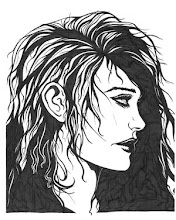5 hours
Read Presentation 1 – An Assistive Technology Overview in JISC TechDis Staff Pack 1, Introduction to Assistive Technology within a Learning Environment (JISC TechDis, undated).
For each of slides 7 to 14, choose the one technology that you are least familiar with and do an Internet search to find out more.
What are its main features?
How expensive is it?
Do suppliers also supply training?
Slide 7
Mind mapping - almost like a spider diagram with a central keyword or theme. Can also be used for conceptual thinking. Works like brainstorming. Not too expensive.....between $7-12. Some suppliers provided free training others were charging in the hundreds.
Slide 8
C-pen - this allows for instant translation to computer screen by simply stroking pen over word or phrase. Also works for annotation when studying so reduces cutting and pasting. Price approx £150 though cheaper in the States. Couldn't find training......manual is probably sufficient.
Slide 9
Trackball - pointing device that uses a ball which is manipulated by thumb or fingers to move a cursor. Looks like an upside down mouse and takes little effort to move. Good tool for mobility problems. Price approx £20 -£40. Again manual is probably enough rather than providing training.
Slide 10
Word Prediction - as text is put onto screen the word predictor will give a list of words as a suggestion to the letters entered. Good for mobility problems as less typing required and for learning difficulties. Number of different software available. Costs around £60. Training is available at an additional cost.
Slide 11
Speech recognition - converts speech to machine readable input. Voice recognition aims to identify the speaker so is different. Can be used fro a number of disabilities including RSI. Price is £50 -£300. Step by Step instruction available from the programme providers.
Slide 12
CCTV - this is an electronic or video magnifier. A CCTV or video magnifier is a simple way of producing large text, images and maps for people with some useful vision. Printed material and objects can be placed under a camera and the magnified image is displayed on a television screen or computer monitor. Prices range from £100 to £3000. Some organisations provide training but not all.
Slide 13
Speech output/screen reader - A standard computer, whether laptop or desktop, can be adapted by adding a screen reader, which enables the computer to ‘talk’. The screen reader will speak the text in its focus and the user navigates through menus, dialog boxes, edit fields and so on. For sight impairment. Prices around £300 - £1500. Training appears to be available but is hard to find.
Slide 14
Minicom - this is a text phone for those with hearing impairment. This is a type of telephone with a small keyboard attached, which transmits text down the telephone line. Someone using a textphone can communicate directly with other textphone users, or with a voice telephone user via a Typetalk operator. Found this really difficult to cost and find if training was available.
Irish poetry
-
I have always been attracted to Irish poetry. Maybe it's because my
ancestors were Irish (My maternal great grandmothers were born in Cork and
Waterford...
6 days ago



No comments:
Post a Comment